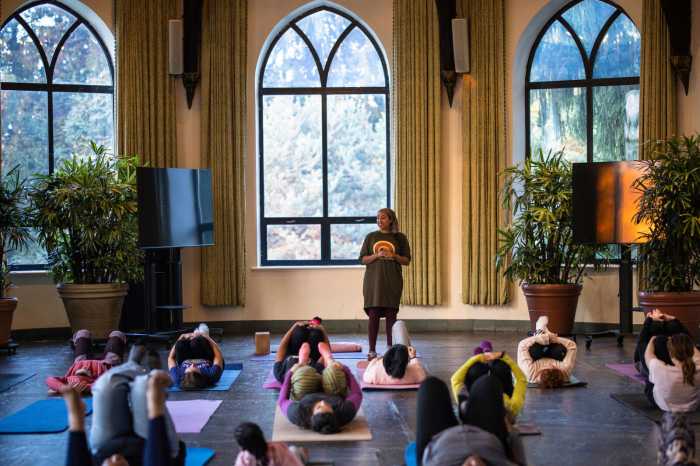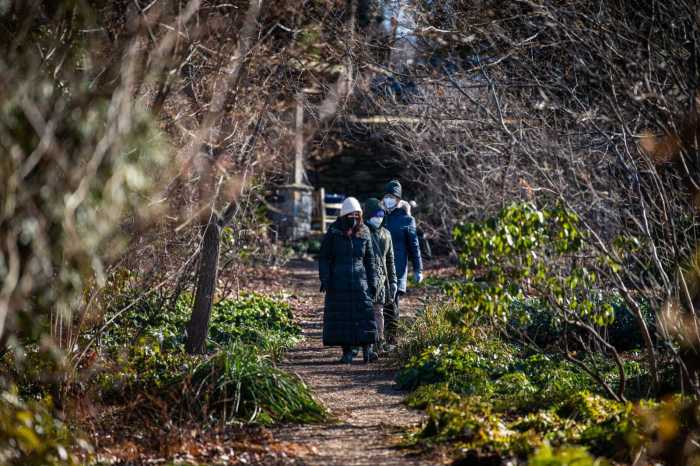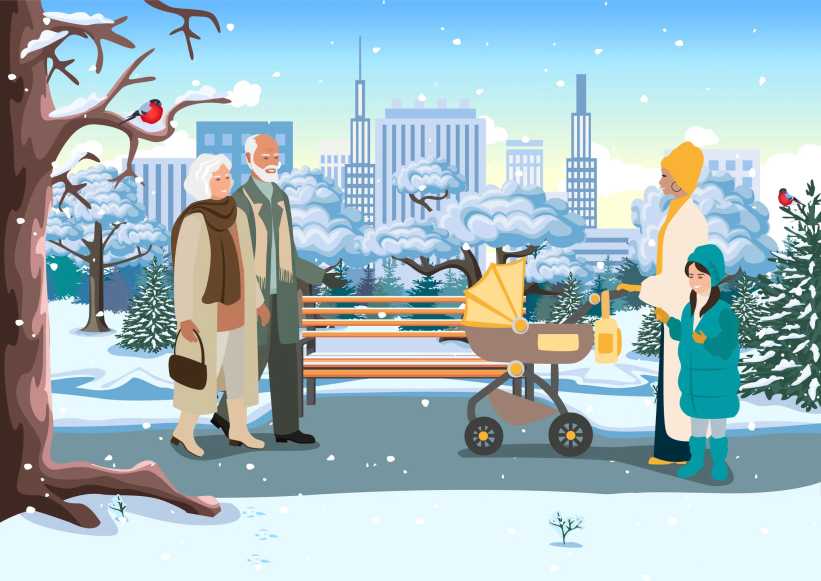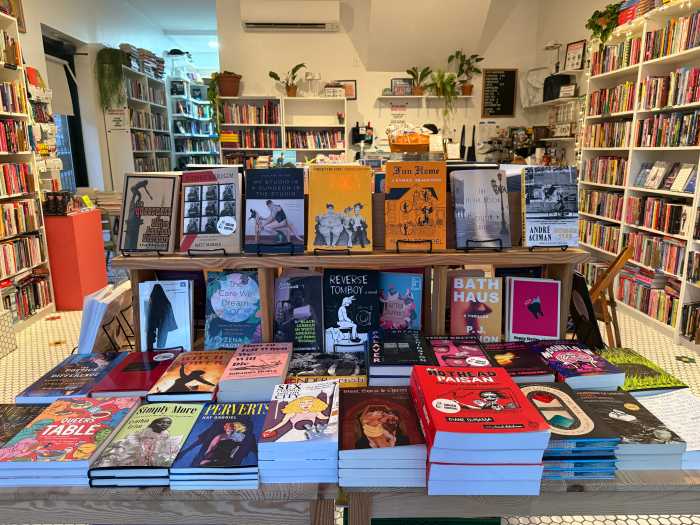Edmundo Martinez is used to traffic — the near-constant hum of pistons pumping and tires on pavement, the screeching acceleration of late-night street races, angry horns, and frantic sirens. After a while, it all started to blend together. It wasn’t until he started traveling farther away from his Parkchester home that he understood: peacefulness sounded different.
Martinez and his neighbors in the South Bronx spent their lives listening to traffic wedged between highways like the Cross Bronx Expressway and Bruckner Expressway; they’ve dealt with noise pollution, abysmal air quality and community isolation for generations.
“The highways literally disconnected us from green space, from other communities and neighborhoods,” Martinez said. “I didn’t go to Tremont a lot as a kid because that meant crossing the Cross Bronx and through the underpasses, which are not clean or maintained well.”
But community organizations like the Bronx River Alliance led some 64,000 residents in the surrounding neighborhoods through years of hard-won progress and projects that revitalized long-polluted and neglected green spaces and environmental havens like Starlight Park and the Bronx River. Their efforts represented a community reclaiming its power decades after master builder Robert Moses rammed expressways across the borough, gutting communities and displacing tens of thousands of people along the way.

Now, the New York State Department of Transportation (NYSDOT) is proposing a $900 million infrastructure project that Bronx residents and environmental advocates like Martinez worry will again exacerbate poor public health and environmental degradation already burdening the neighborhood. The plans have led to a bitter fight rooted in a deep mistrust of state officials and a history of environmental racism that locals say threatens to repeat itself.
Health over highways?
The Cross Bronx Expressway, the major—and majorly hated—highway crossing the borough east to west, has five crumbling bridges along a one-mile corridor in Parkchester that require repair.
To complete the project, NYSDOT says that traffic must be rerouted and has proposed building a temporary roadway to keep vehicles moving along the Cross Bronx while bridge repairs are underway. But community members disagree, and strongly oppose the state’s plans, all of which involve erecting new structures in the neighborhood.
Dariella Rodriguez, Director of Community Development at the Point CDC in Hunts Point, spoke at a September 10 rally calling on the state to revisit the design process and develop new, community-centered solutions for repairing the bridges.
“ Here we are once again demanding that we prioritize health over highways,” Rodriguez said. We are unfortunately the experts of what it means for your health to be so negatively impacted by highways surrounding, crowding, and trapping us. Families here are the ones who have to mourn children that they lose to asthma.”
Rodriguez and the Point CDC are part of a coalition of grassroots organizations and community members that are working together to stop the state from adding new structures to the Cross Bronx Expressway.

Some options put forward by NYSDOT to shore up the aging bridges call for a “traffic diversion structure,” building a new, elevated roadway that cars and trucks will use as an alternate route while crews make repairs on the Cross Bronx bridges. The state promised to either tear the structure down after the project is finished or convert it into a pedestrian and cyclist path.
Another option would be to skip the diversion structure, make the bridge repairs in stages, and construct an additional “shared use” path along the highway.
But for a community that has lived for generations with the repercussions of planning and development that centered the interests of industry over local residents, any construction beyond what is absolutely necessary to ensure the safety of the bridges on the Cross Bronx Expressway is unacceptable.
Siddhartha Sanchez, executive director of Bronx River Alliance, called on New York State officials, including the NYSDOT and Gov. Kathy Hochul, to engage with Bronx residents and halt their current plans.
“ The Bronx needs our leaders to listen to us,” Sanchez said. “We don’t need to expand a highway that already makes us sick. We need investments that connect our communities and make our streets safer and improve our health outcomes.”
Hochul’s office directed the Bronx Times’ request for comment to NYSDOT.
‘Not an expansion’
NYSDOT and Bronx residents disagree about the project’s characterization. The state maintains that the repairs do not expand the highway.
“The State Department of Transportation appreciates the continued feedback of the community as we continue to work our way through the environmental process for this project,” a state DOT spokesperson said in a statement. “This project is not an expansion of the Cross Bronx Expressway.”

The state’s design plan notes in detail the incredible disrepair of each of the bridges, roadways, ramps, and service roads after decades of use by cars and trucks. Just a sampling of its descriptions includes extensive cracks, crumbling concrete, exposed-rusted rebar, corroded steel, and substandard railings.
To make the bridges safe again, the state is proposing extensive rehabbing: new, reinforced concrete, swapping out the old railings and medians for concrete barriers, upgrading the surrounding drainage, better lighting, new signage— the works.
To Martinez’s dismay, federal regulations require the upgrades to permanently widen the highway to create a paved shoulder at a minimum of 10 feet on the right and 4 feet on the left. According to NYSDOT, the added shoulder space will allow faster access for emergency vehicles and extra space for disabled vehicles to clear roadways and avoid congestion, therefore reducing pollution.
Martinez told the Bronx Times that the reality is different.
“ I think anyone who drives a car knows that when you add a shoulder, when there’s traffic congestion, people use that shoulder as a travel lane,” Martinez said. “Because they want to get off at the next exit or they don’t wanna wait.”
Bronx residents and environmentalists say they will continue to fight the state’s plans to build additional structures for traffic diversion or a shared-use path.
Assembly Member Amanda Septimo and Assembly Member Emérita Torres also pledged to keep up the pressure on the state to “do the right thing.”
”It is a privilege to fight for the place that I love,” Septimo said. “But it is also a shame that we always have to— that the Bronx is always called to the carpet to fight for its life in one way or another. We are standing here to demand better, but we are also standing here to say, enough is enough.”

Consolation prize
So far, at least some of the coalition’s efforts have been successful.
On Aug. 28, NYSDOT announced that it would stop considering two alternative options that would convert the proposed traffic diversion structures into local roadways, potentially allowing unwanted additional vehicles and more pollution into the area.
“The public has spoken, and we are listening,” NYSDOT Commissioner Marie Therese Dominguez said in a statement announcing the decision.
She continued, “We have said from the very start of this process that it would be shaped by public input, and we meant it.”
But Bronx environmental advocates aren’t willing to settle for a consolation prize. Following the announcement, Daniel Ranells, deputy director of programs for the Bronx River Alliance told the Bronx Times that while he’d take the win, the move to kill the worst of the proposals didn’t go far enough.
“ We’ve been talking about this with New York State DOT for a while now, but we also don’t want a traffic diversion structure [at all],” Ranells said. “We don’t want new highway structures being built in the Bronx in an already burdened area. So we’re pleased, but this is not a celebration. This is not victory yet.”
When advocates and community members asked the state to consider repairing the Expressway lane by lane without building any additional structures, they say they were met with resistance and complaints that repairing the bridges without a traffic diversion structure would stall the project by an additional two years.

For Norma Saunders, who represented over 3,000 people living in the shadow of the Cross Bronx as president of the Bronx River Houses Tenant Association on Wednesday, a two-year delay is a drop in the bucket.
”Are we talking about just two years?” Saunders said. “Or are we talking about the community’s lives? And that’s what I’m here for—to fight for the community’s life.”
Saunders’ community, like Martinez’s, has lived with the impacts of the Cross Bronx Expressway for generations. Many of the Bronx River Houses residents are seniors or children who have developed asthma, Saunders said.
“ A lot of our windows can’t be open due to the polluted air that we already breathe,” she said.
Saunders worried that more development that doesn’t prioritize the health of the people who live nearby will be a “death sentence.”
“ Y’all might as well just put a cemetery across the street, and that’s what’s going to happen if this goes forth.”

Still, the state DOT assured the Bronx Times that it was sensitive and responsive to the needs of people in the Bronx, noting that community feedback prompted the state to remove the options that would maintain the traffic diversion structures as roadways from consideration.
“We will continue to listen to the community and are committed to bringing the best project forward with the greatest benefits to the community,” the agency said in a statement.
‘It’s greenwashing’
Despite the state DOT’s public statements, neighbors and members of the coalition have accused the agency of misleading the public to serve their own interests.
Stakeholders said that many of the project’s details were hidden beneath language suggesting that it would benefit the community. In 2024, the traffic diversion structure was branded as a “multimodal community connector.” Coalition members said they felt that the pitch was disingenuous.
“It’s greenwashing,” said Jaqi Cohen, director of climate and equity policy at Tri-State Transportation Campaign. “ It was presented as a multimodal [community connector] project, but it was a highway expansion.”
She said the state was using “our language” to sell its project, perhaps referring to the historically charged origins of the Cross Bronx Expressway, which divided poor communities in the Bronx. Grassroots organizations in the Bronx have long sought environmental justice through reconnecting the communities split by the expressway’s construction.
But coalition members said a “multimodal community connector,” as NYSDOT designed it, would further distance Bronx communities from that goal. The state has since updated the language to “traffic diversion structure.”
Sanchez told the Bronx Times that despite the plan’s previous language which highlighted “community connections,” the reality of NYSDOT’s design options and the lack of transparency throughout the process has made the top priorities for the Five Bridges Project clear.
“ Moving forward, it is important that we continue to talk about this as what it is, right?” Sanchez said. “An expansion of the highway that’s meant to facilitate vehicles moving through the community— not the community and the lives that are here.”
Further complicating things, beginning in 2022, the New York City Department of Transportation (NYCDOT) and the New York State Department of Transportation (NYSDOT) embarked on a year-long, $2 million community planning study called “Reimagining the Cross Bronx.” city and state officials worked hand-in-hand with community members to create a plan for the future of the expressway that Bronxites championed and celebrated.
But the Reimagining the Cross Bronx study was not incorporated into planning the Five Bridges Project repairs. The two projects are completely separate and the large, transformative projects conceptualized during the reimagine process still need to find funding before any design and construction review process can begin in earnest. Language on NYSDOT’s bridge project website implies that any future improvements to the expressway are contingent upon the Five Bridges Project.
“The five bridges project is foundational to any future enhancements along the corridor that may occur as a result of the [reimagine] study,” NYSDOT’s project website said.
Martinez told the Bronx Times that the two projects are often confused, with Bronx residents associating the good will that was earned through the reimagine process with the bridges project, which is completely separate and unrelated.
“People are like, ‘oh no, I gave input, I gave feedback,’ not recognizing that this [bridge project] is different,” Martinez said.
He said that the confusion stems from an ineffective public outreach campaign that shows “ disrespect and lack of consideration” to people in the Bronx.

NYSDOT maintains that it has done extensive community outreach and lists engagement efforts on its website. But coalition members told the Bronx Times that the state largely relies on local nonprofits and community boards to do outreach for the agency. Ranells said that the NYSDOT-coordinated events aren’t well attended.
“ The June public update meetings that they had, I think had a total attendance of about 50 people for a project that you’re talking about, almost a billion dollars,” Ranells said.
A double standard
Advocates and Bronxites called out the persistent double standard, insisting that if the Cross Bronx Expressway were next to a wealthier neighborhood with the resources to hire attorneys or lobbyists, the state would be more willing to listen to their needs.
Community opposition and at least one threat of a lawsuit in the wealthy neighborhood of Brooklyn Heights squashed similar proposals in 2018 and 2019 to repair crumbling infrastructure on the Brooklyn Queens Expressway. The projects would have been managed through the New York City DOT instead of the state, and traffic would have either been diverted through the beloved Brooklyn Promenade or through a temporary diversion structure while vital improvements were made to the endangered three-tiered expressway.
Earlier this year, architect Marc Wouters, who also proposed one of the earlier nixed plans, introduced a new plan to repair the BQE that increases public space by consolidating traffic from two levels of the triple-decker structure and capping the roadway with public and green space.
Neighbors of the Cross Bronx Expressway say they’re asking for the same type of consideration from the state.
“If the project’s not good enough for Brooklyn, then it shouldn’t be good enough for the Bronx,” Martinez said. “We don’t need, we don’t need additional roadways, we don’t need wider roadways. We need improved public transit, pedestrian and cyclist infrastructure.”
Others pointed out that people living near the Cross Bronx Expressway were being asked to sacrifice dozens of mature trees and green spaces— which work to mitigate the harmful impacts of the Cross Bronx pollution— in the name of completing a highway repair project quickly. Community districts in the South Bronx, including four along the Cross Bronx Expressway, rank among the hottest in the city with the least tree canopy coverage.
Kathy Park Price, Director of Advocacy & Policy for New Yorkers for Parks, said the Five Bridges Project, as proposed, would be taking a step back.
“When we talk about expanding highways at the expense of trees and parkland, we’re talking about robbing communities of the very resources that keep people healthy,” Park Price said. “The state may frame the project as progress, but there is nothing healthy or progressive about trading cleaner air and green space for more concrete and traffic.”
The project is going through the environmental review process which will assess the potential social, economic, and environmental impacts. The draft environmental assessment is set to be released this fall and the public will have a 45 day review period and will hold public hearings before making final decisions.
Coalition members, elected officials and advocates said they’ve proposed workable alternatives and hope NYSDOT will consider changing its approach, but emphasized that the agency consistently cites the timeline benefits to building a traffic diversion structure. NYSDOT insists that it is still considering all options, including community feedback about the traffic diversion structure.
But some community members are skeptical that the state is listening. David Gomez, a junior at nearby Fannie Lou Hamer Freedom High School, joined his peers at the Sept. 10 rally to say that an expanded highway would impact Bronx youth for generations to come.
“How come we never have a chance to speak about what we want and what the people who live here feel about [the highway]?” Gomez said. “Why do they always get the first choice instead of the people who are actually being affected—get no voice. I think it shouldn’t happen at all. It affects our health, it’ll affect our future generations.”























